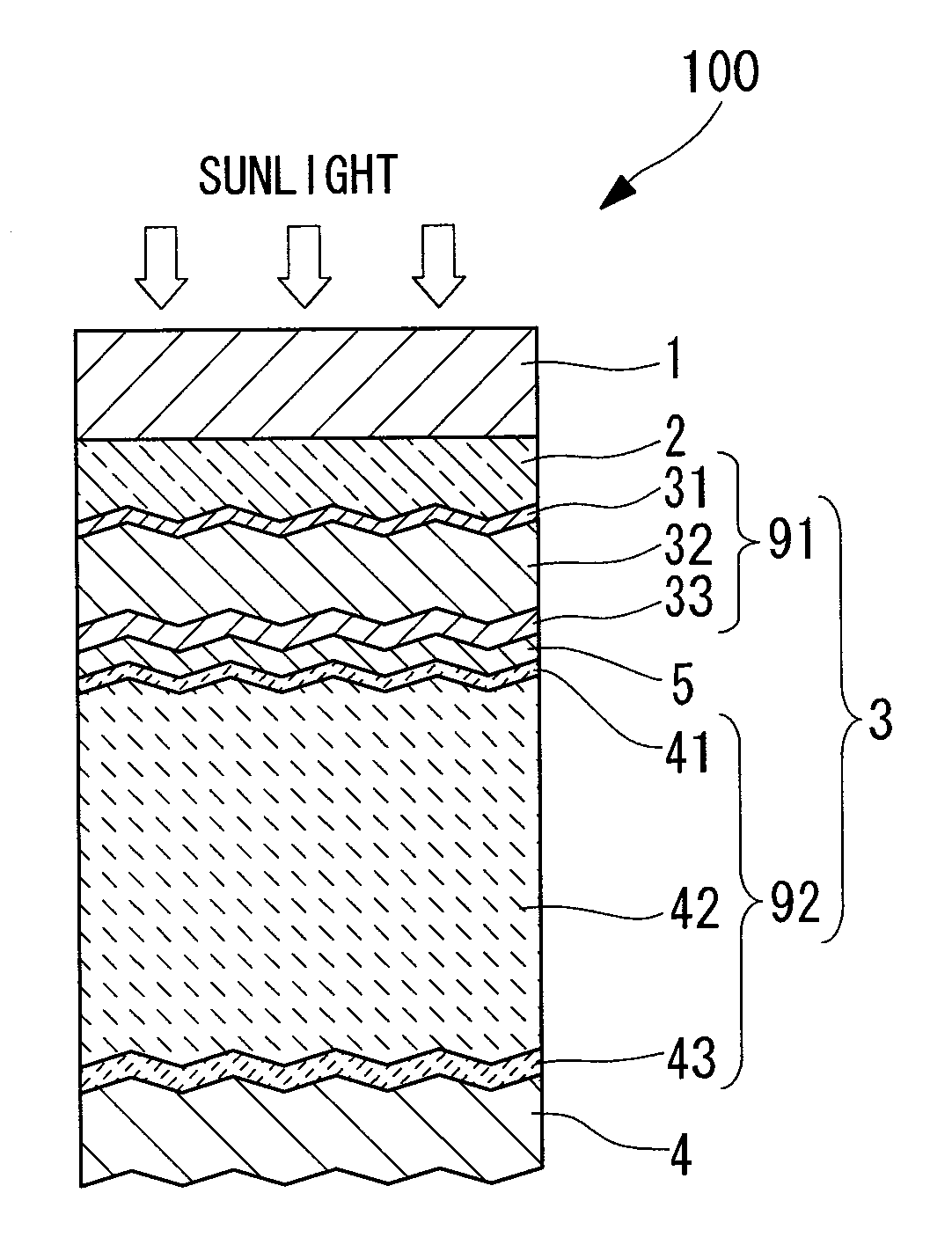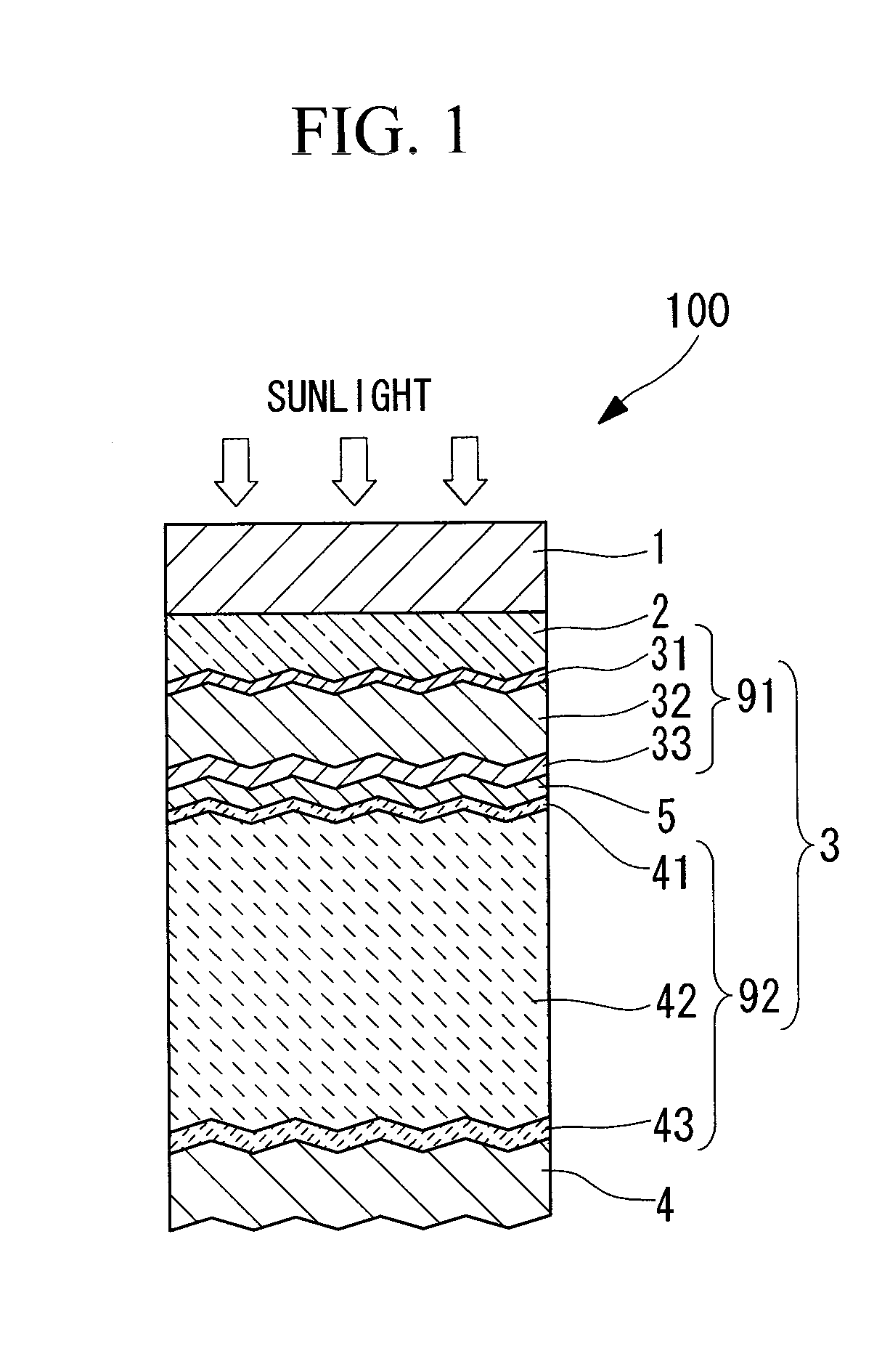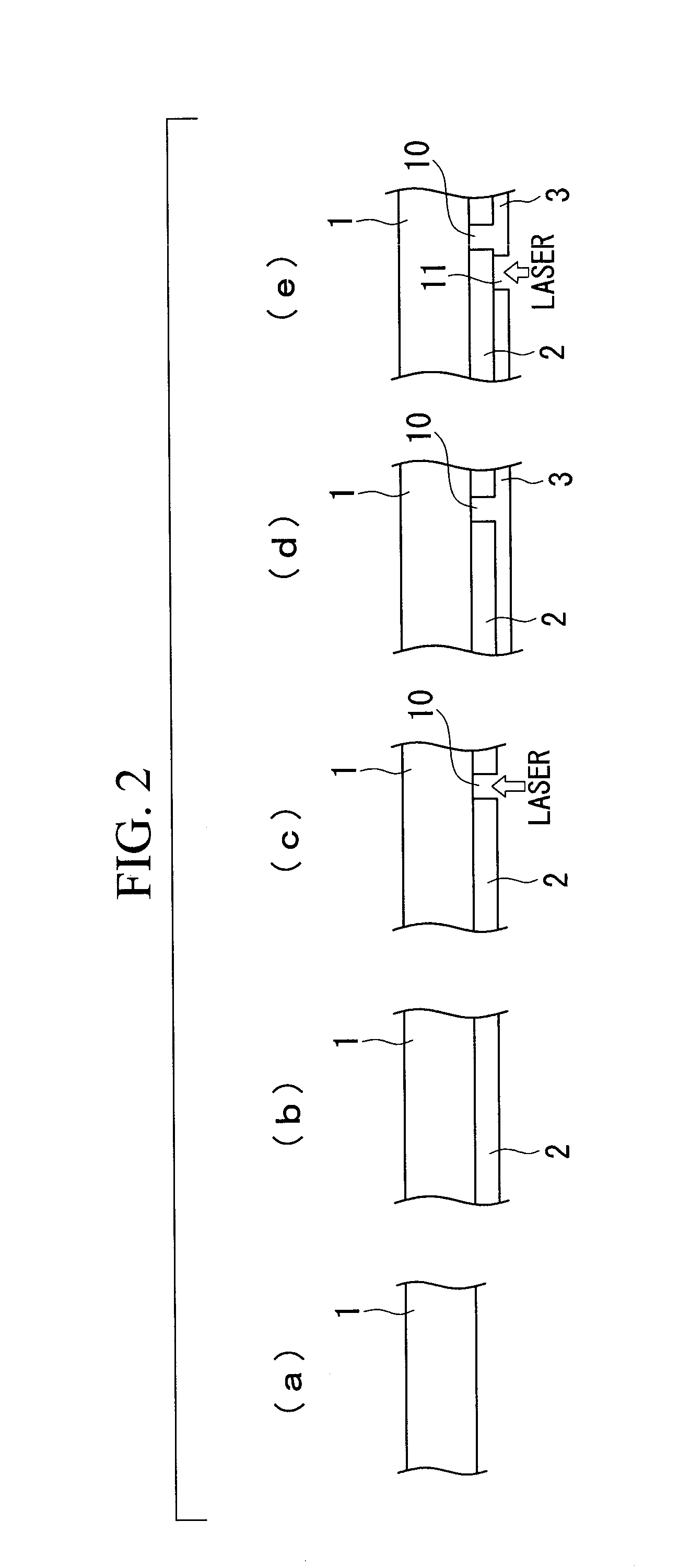Process for producing photovoltaic device and photovoltaic device
- Summary
- Abstract
- Description
- Claims
- Application Information
AI Technical Summary
Benefits of technology
Problems solved by technology
Method used
Image
Examples
Embodiment Construction
[0058]FIG. 1 is a schematic representation illustrating the structure of a photovoltaic device according to the present invention. A photovoltaic device 100 is a tandem silicon-based solar cell, and comprises a substrate 1, a transparent electrode layer 2, a first cell layer 91 (amorphous silicon-based) and a second cell layer 92 (crystalline silicon-based) as a photovoltaic layer 3, an intermediate contact layer 5, and a back electrode layer 4. Here, the term “silicon-based” is a generic term that includes silicon (Si), silicon carbide (SiC) and silicon germanium (SiGe). Further, the term “crystalline silicon-based” describes a silicon system other than an amorphous silicon system, and includes both microcrystalline silicon systems and polycrystalline silicon systems.
[0059]An embodiment in which the production process according to the present invention is applied to the deposition of a crystalline silicon i-layer is described below, using the production steps for a solar cell panel...
PUM
| Property | Measurement | Unit |
|---|---|---|
| Fraction | aaaaa | aaaaa |
| Speed | aaaaa | aaaaa |
| Speed | aaaaa | aaaaa |
Abstract
Description
Claims
Application Information
 Login to View More
Login to View More - R&D
- Intellectual Property
- Life Sciences
- Materials
- Tech Scout
- Unparalleled Data Quality
- Higher Quality Content
- 60% Fewer Hallucinations
Browse by: Latest US Patents, China's latest patents, Technical Efficacy Thesaurus, Application Domain, Technology Topic, Popular Technical Reports.
© 2025 PatSnap. All rights reserved.Legal|Privacy policy|Modern Slavery Act Transparency Statement|Sitemap|About US| Contact US: help@patsnap.com



